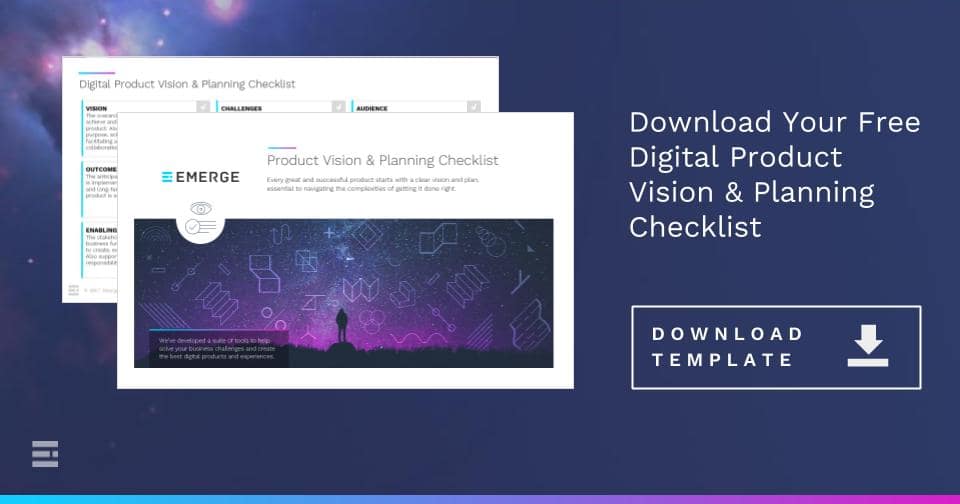
A Product Manager’s Guide to Diagnosing and Fixing Deep Product Issues
- Product Development /
- Product Strategy /
Assessing effects, analyzing the cause and adapting solutions in product development
It’s a product manager’s worst nightmare – you launch a new product only to discover major issues and defects. Despite your thorough planning and development, something clearly went wrong. But where’s the breakdown? Identifying root causes of product failures is critical, but it’s not always straightforward.
According to a survey by the Project Management Institute, 47% of products are deemed failures or fail to launch. Take Peloton’s disastrous product launch in 2022. The fitness company unveiled a new connected rowing machine priced at $3,195. But instead of eager customers, the product was met with widespread criticism and ridicule for its “terrible design” and exorbitant price point. Pre-orders stalled and Peloton’s stock plunged.
In this article, we’ll walk through techniques to analyze defects and dig into the real underlying issues. Whether you’re dealing with defects in your product roadmap, sprint deliverables, or entire Agile development process, these root cause analysis methods will help. You’ll learn how to:
- Look beyond obvious symptoms to uncover hidden root causes
- Ask the right questions to get to the source of problems
- Develop frameworks to methodically pick apart issues
- Create action plans that address causes and prevent future defects
By finding and fixing the origin of product problems, you can turn failures into insights. With the right approach to root cause analysis, your team will build better products that delight users.
It all comes down to cause and effect.
Sticking with the Peloton example, many pointed to the rower’s high price and unusual design as the cause of failure. But the disastrous product launch was really just an effect resulting from deeper issues within Peloton.
Some analysts suggested that Peloton relied too heavily on market research rather than user testing and prototyping. Others critiqued Peloton’s insular culture and lack of outside perspective. Whatever the root causes, they remained obscured, leaving the company leadership scratching their heads. Unfortunately, finding the origins of product failures is often complicated.
The rowing machine’s failure was a symptom of larger problems in Peloton’s product development process and culture. To prevent future defects, the company needed to dig into the root issues and address the real causes.
When conducting root cause analysis, involve key stakeholders like engineers, UX designers, product managers, and end users. Make sure each perspective is represented in sprint planning meetings or retrospectives.
Determine the Cause: Why is This Happening?
Harvard Business Review lauds an exercise called the Five Why’s. Why is this problem happening? Ask yourself again. Why is this problem happening? Keep asking until you’ve asked five times; each time you dig deeper. This layered questioning allows you to pick apart a complex problem to identify its true cause.
For example, why are my employees not performing as expected? Well, why?
Because we’re not giving them the right information. Why?
Because we don’t have access to the right information. Why?
Because we haven’t built the tools needed to give that information. Why?
Because we don’t have the knowledge or the expertise to build those tools. Why?
Because when we began, they weren’t needed, but we have grown beyond our capabilities and the systems that we have today are no longer workable to reach our goals for tomorrow.
This exercise allows you to get in deep, to clearly analyze and ultimately answer the question: what is the cause?
As a product manager, always dig beyond the surface issues raised by your team. Use techniques like the 5 Whys to identify weaknesses in your Agile workflows that could be causing downstream defects.
Dig Deeper: What is Affecting the Situation?
Business leader Michael Gerber wrote one of the most successful business books of all time called The E-Myth: Why Businesses Don’t Work and What to Do About it. In it, he talks about cause and effect relationships in business. He suggests an excellent resource, the Key Frustration Process Worksheet, to distill down to the actual causes and effects of any business problem.
The worksheet offers seven steps needed to analyze, identify and solve the problem. Each step asks questions to help discover the cause and its remedy. This type of exercise works well because it not only demands that you find and understand the root cause, but also gain a high-level understanding of all the effects. Furthermore, goes a step beyond simple cause and effect analysis by leading businesses to seek solutions. This forward-thinking approach to problem solving will get you on the right track.
Create an Action Plan to Resolve the Root Cause
Finding the root cause is only the first step – you need a plan to address it. Here are some tips for devising solutions:
- Hold a brainstorming session with cross-functional team members to generate potential fixes. Engineers, designers, customer support, end users – get broad input.
- Develop SMART goals for your solution – Specific, Measurable, Achievable, Relevant, and Time-bound.
- Prioritize solutions that will have the biggest impact in preventing recurrences of the defect. Go after the biggest root causes first.
- Assign owners and resources to execute on solutions. Who will be responsible for implementation?
- Create milestones and metrics. How will you measure success and progress for each part of the plan?
- Build in feedback loops to monitor results and adjust course as needed. Continuously inspect and adapt.
- Update your product roadmap with tasks for implementing solutions. Schedule time for proper testing.
- Document institutional knowledge so your learnings become standardized best practices for the organization.
Applying the 8D Method to Dig into Software Defects
The 8D methodology provides a structured approach to identifying, correcting, and preventing issues. Let’s walk through how digital product teams can utilize it to pinpoint software defects.
Step 1 – Form a Team: Assemble cross-functional members from dev, QA, UX, customer support, and other relevant perspectives. Make sure to include team members adjacent to the problem area.
Step 2 – Define the Problem: Document all details about the defect – expected vs actual behavior, reproduction steps, error messages, etc. Fully characterize the problem.
Step 3 – Contain Temporary Fix: Implement a workaround, disable feature, or patch to contain impact while root cause is investigated.
Step 4 – Root Cause Analysis: Dig into all potential causes using the 5 Whys, cause-effect diagrams, or other tools. Look beyond symptoms.
Step 5 – Identify Permanent Fixes: Brainstorm solutions that will eliminate the root cause and prevent recurrence. Prioritize by impact.
Step 6 – Implement Permanent Fix: Update code, configs, designs, or processes. Test thoroughly in staging environments before pushing changes.
Step 7 – Prevent Recurrence: Update backlogs, workflows, documentation, and QA practices. Retrospect on lessons learned.
Step 8 – Congratulate the Team: Recognize contributions and celebrate insights that will improve product quality. Drive continuous improvement.
Walking through the 8D methodology provides a proven framework for product teams to surface root causes and implement fixes for improved defect prevention.
Albert Einstein once said that “In the middle of difficulty lies opportunity.” According to Einstein, you can emerge from difficulty with a greater, clearer vision than when you first began. You can use the knowledge and experience gained from the problem to come back and create a leaner, meaner vision. To learn how to do this and do it well, check out the Product Vision and Production Checklist.
Incorporating Root Cause Analysis into Your Agile Practices
Continuous root cause analysis should be baked into core Agile processes to help product owners and scrum masters prevent defects and technical debt. Here are tips for integrating it into sprints:
- Standups: Ask pointed questions about any anomalies, bugs, or issues. Dig into symptoms and connect the dots.
- Retrospectives: Dedicate time to uncovering root causes of problems that occurred. Leverage techniques like the 5 Whys.
- Backlogs: Log bugs and explicitly call out exploring the source as part of resolution. Detail discoveries.
- Sprint planning: Review analytics and customer feedback for pain points to determine underlying causes.
- Demos: Showcase root cause insights and process improvements made in addition to new features.
- Release planning: Evaluate recurring issues from previous sprints to identify persistent root causes.
By infusing root cause analysis into Agile ceremonies and artifacts, product teams get into the habit of deep diving on defects before they multiply. Make it a consistent part of your product roadmap and sprint cadence.
Root Cause Analysis Pitfalls to Avoid
While root cause analysis is a valuable process, there are some common challenges teams should watch out for:
- Stopping at symptoms – Don’t just look at surface level issues. Keep asking “why” to get to the source.
- Limited perspectives – Make sure to include insights from different roles like dev, UX, support.
- Insufficient data – Collect as much relevant data as possible to analyze. Look at code, analytics, user research.
- Blaming individuals – Focus on process gaps rather than assigning blame. Foster psych safety.
- Scope creep – Stay focused on the original problem. Don’t continually expand scope.
- No documentation – Document findings, actions, and recommendations for institutional knowledge.
- Not testing solutions – Verify fixes in staging environments before launching to customers.
- No follow-through – Don’t stop at root cause. See solutions through to full implementation.
- No iteration – Continuously inspect and improve processes. Root cause analysis is ongoing.
By knowing common pitfalls, product teams can proactively avoid them and conduct more effective root cause analysis. Stay vigilant in digging to the source!
Continuously Inspect, Analyze, and Improve
Product defects and failures will inevitably occur – no process is perfect. The key is having the right systems in place to constantly inspect outcomes, analyze root causes, and improve processes.
With the root cause analysis techniques provided in this article, your team will be equipped to dig into problems and identify origins. Go beyond surface symptoms and get to the source.
And most importantly, take action to address those underlying issues. Use root cause insights to fuel product and process improvements. Update your roadmaps, refine workflows, and prevent future defects.
By instilling these practices of continuous inspection, analysis, and adaptation, you’ll create a culture focused on the heart of the problem rather than just the symptoms. And your team will build better products that exceed customer expectations.
Turn failures into insights and defects into opportunities for growth. With the right approach, your team will thrive by proactively finding and resolving the root causes of issues. The outcome will be high-quality products that customers love.
